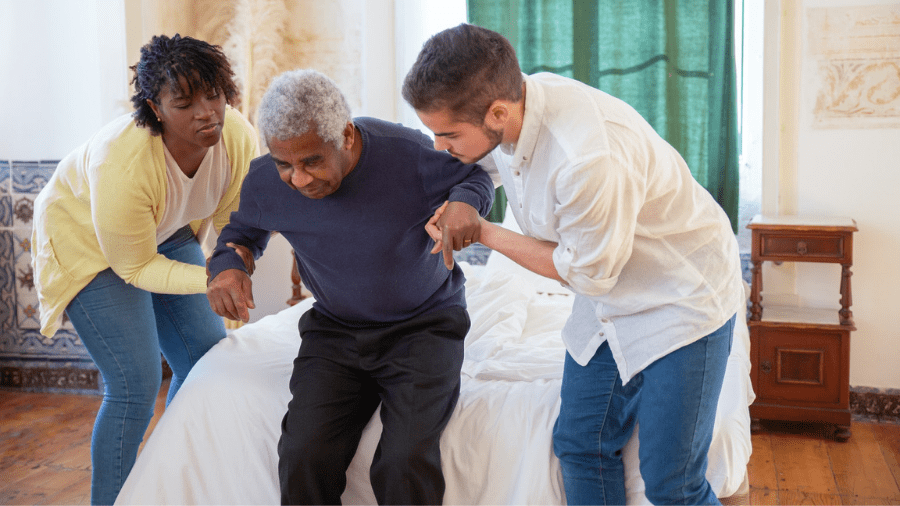Making Your Home Safe for Older Residents

Whether an older relative is moving in with you, or you’re planning on aging in your own home, it may be time to check out how safe and accessible your home is.
Stairways and bathrooms can be risky places for able-bodied people, but throw mobility or cognitive issues into the mix and those areas of the home can create life-threatening mishaps.
Let’s take a look at how to make your place safer from the outside in:
Walkways and entryways
Illuminated and flat walkways will provide safety for an older relative who may use a walker or wheelchair. Take a look at yours, and repair cracked or uneven sidewalks, add anti-skid strips and consider motion-sensor lights for extra protection.
Install rails on both sides of stairways and use color-contrasting treads for added visibility. Create a no-rise entryway with a ramp. Eliminate thresholds in the entryway into the home, as well as throughout the home, since they are known to be trip-and-fall hazards.
Bathroom
Do not skimp when it comes to creating a safe bathroom. Make sure bathmats are non-slip, and install non-slip strips in the bath and shower. Get some extra protection with non-slip rug tape.
Installing grab bars in the shower or bath and near the toilet will help prevent falls. Seniorliving.com advises using vertical or U-shaped grab bars, as opposed to diagonal bars, which are conducive to slipping. The walls also need to be reinforced to support the weight of the person using the bars.
Extra lighting in the shower, as well as a height adjustable hand-held shower sprayer and shower seats or benches will also help.
An elevated toilet with ample space for maneuvering a walker or getting into a wheelchair are recommended for those with mobility issues.
Bedroom
Make sure there is enough space to maneuver a wheelchair or walker. Lighting should be ample and reachable from the bed. Rocker light switches near the headboard are recommended. Create closet space with a doorway that can accommodate mobility equipment and lower shelves for easy access.
Kitchen
To keep things safe in the kitchen, the name of the game is preventing bending or crouching, especially when hot food and appliances are involved.
Appliances should be well-lit with easily readable dials and buttons. Seniorliving.com recommends wall ovens and microwave drawers to avoid lifting heavy and hot items over the appliance door.
Make pantry items accessible with lower shelves, and place frequently used items front and center. Lazy susans and roll-out shelves are ideal.
Make sure the water pressure is well adjusted and the water heater is set at 120 degrees F to avoid burns.
With these safety measures in place, both you and your older loved ones can have peace of mind.
SOURCES:

